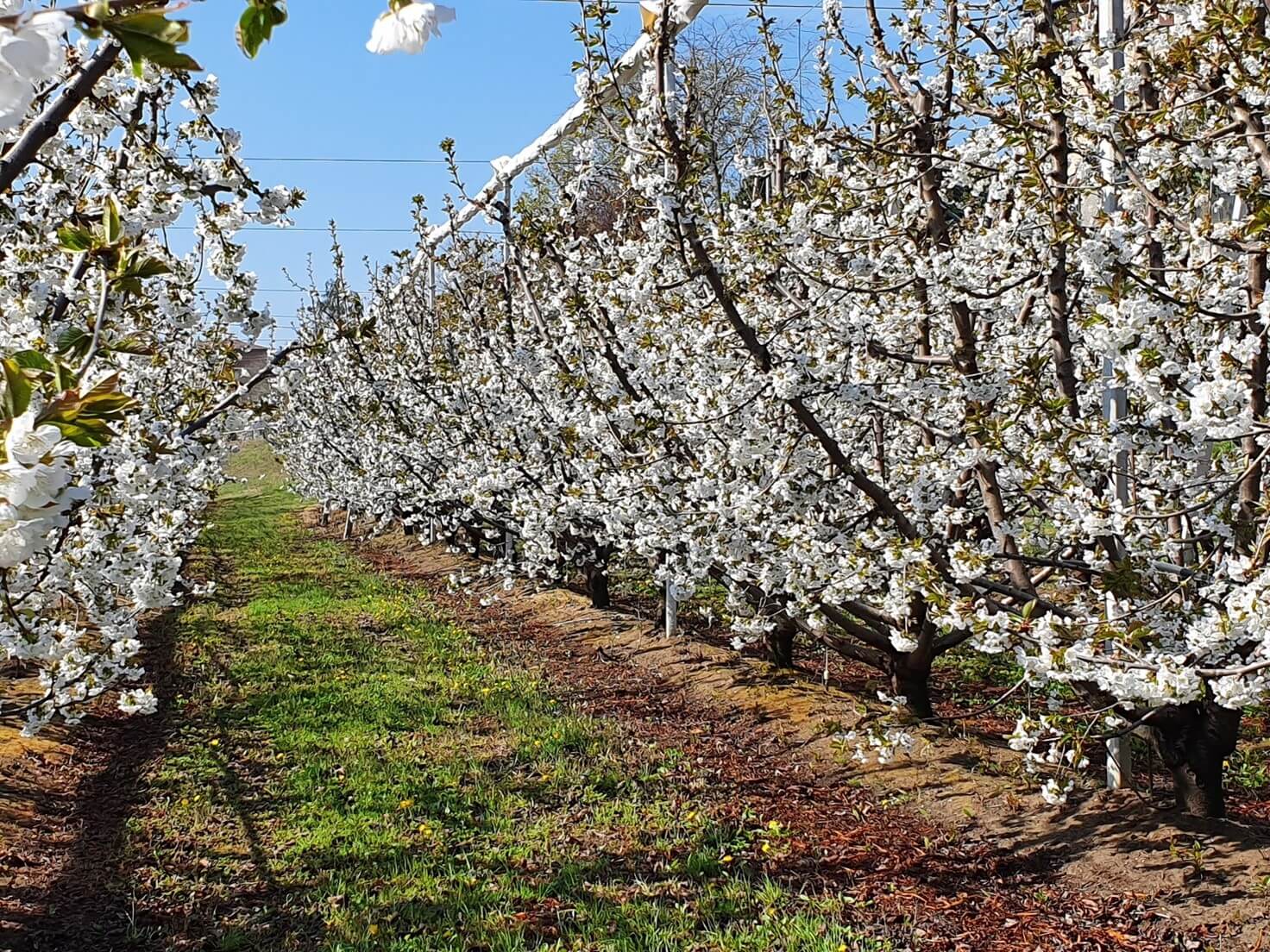Pacific Red (COV), Nimba (COV), Areko (COV), Royal Helen (COV) and Royal Lafayette® are the 5 varieties that have entered the Salvi Vivai commercial offer from this year.
"These are 5 new-generation varieties," explains Andrea Bagnolini, Salvi Vivai's Sales Director, "that we strongly desired in order to increase our offer and provide our producers with selections that are increasingly better suited to their needs.
What needs are we talking about?
First of all, the intention is to lengthen the harvest window by proposing a set of varieties that starts with the earliest ones, such as Nimba (VOC) and Pacific Red (VOC), and arrives at the later ones such as Areko (VOC) and especially Royal Helen (VOC).
We therefore start with Nimba (VOC) which has a ripening time of - 5 days compared to Burlat and end with Royal Helen (VOC) which is ready for harvest + 32 days compared to Burlat.
Size and productivity
Another element of absolute interest to producers is the size of the cherries. All the new varieties in the Salvi Vivai range have shown a remarkable fruit size as their main characteristic.
For Pacific Red (COV) and Nimba (COV), we are talking about an average size of 28-30 mm up to the 33-34 mm of Royal Helen (VOC).
"These varieties also share a high productivity and are very well adapted to high and very high density plantings," explains Massimo Cristofori, Salvi Vivai sales manager.
Each of these varieties has of course its own specificity: "Pacific Red (COV), a self-fertile variety, counts among its qualities a good resistance to cracking and an excellent shelf-life of the fruit both on the plant and after harvest," Cristofori continues, "Nimba (COV) presents a fruit with excellent organoleptic characteristics.
Areko (COV) has an unmistakable heart-shaped fruit that excels in quality and size. Royal Helen (COV), a self-fertile variety, has fruit with a very large size and excellent texture. Royal Lafayette® is an intermediate maturing variety, + 14 Burlat, highly productive and with a high Brix levels.
Collaboration with the University of Bologna
These new varieties are added to Salvi Vivai's already important offer. Among the many proposals certainly worthy of note from the Ferrara (Italy) based nursery are the cherries of the Sweet® family, born from a research programme of the University of Bologna, which, through a long process of cross-breeding and selection, has arrived at the identification today of 7 varieties that are very similar in terms of organoleptic qualities but different in terms of ripening time.
Salvi Vivai collaborates with Unibo for the management of an experimental cherry orchard, where Sweet® cherries are among the varieties used in the creation of an innovative plant with different forms of cultivation and coverage.
It was precisely from this test orchard that Salvi Vivai harvested a cherry of the PA7UNIBO*Sweet Stephany® variety weighing 26.45 grams, which was awarded the Guinness World Record in the 2021 edition.
But not only Sweet®: great satisfaction also comes from varieties well known for their excellent performance such as Kordia, Regina, Ferrovia, Grace Star® and PA6UNIBO* Marysa® among the best known.
Salvi Vivai has innovation in its DNA and the cherry sector has always represented for the company a sensitive field in which to do research and introduce novelties.
The cherry crop seems to confirm that it can maintain the high expectations of producers both in Italy and abroad with an important development in terms of cultivated areas and that it can still give great satisfaction in the future.
Cherry Times - all rights reserved










